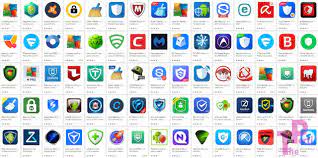These cyberattacks target everyone, but trends show small businesses are one of the most common targets. In fact, approximately 43% of cyberattacks target small businesses! The leading cyber security challenges that companies face each year depend on a number of factors. These include the growing sophistication of cyber threat actors, evolving corporate IT infrastructure, and external drivers

Trending Cybersecurity Threats To View
- Ransomware and as-a-service attacks
- Enterprise security tool sprawl
- Misconfigured security applications at scale
- Sophisticated spear phishing strategies
- Increased frequency of credential theft
- Mobile device and OS vulnerabilities left unchecked
- Data governance and management errors
- Distributed growth of insider threats post-COVID
- Poorly secured cloud environments
Mobile device and OS vulnerabilities left unchecked
A Denial of Service (DoS) vulnerability presents within an Apple or Android OS. These attacks are primarily focused on making a resource unavailable for the purpose for which it was designed.
Mobile devices can also be used as ‘bots’ to perpetrate Distributed DoS attacks (DDoS). This means many devices infected with the same malware can be used together to generate a DDoS attack on a separate entity.
Incomplete post-attack investigations
“The top cybersecurity mistake that enterprises make is not conducting a full proper forensic investigation,” Campbell said. “The sheer volume of incidents security experts have to deal with each day, coupled with the lack of automation, makes it an extremely hard task when it comes to striking the right balance between investigating enough and tackling the next problem. However, when organizations are not digging deep enough, they are more likely to miss something big that can cause significant damage.
Phishing meets COVID-19
During the current Corona crisis, the people are are at home more often. Adding to that, employees are working from home more than ever before. This presents itself as great breeding ground for cyber criminals. Phishing attacks are setup in a way to send the victims to websites with fake information about the Coronavirus. Often times, these sites use the user’s system resources to earn cryptocurrency
Ransomware and as-a-service attacks
Ransomware is a malicious software designed by organized cyber criminals, aka “bad actors”, who determinedly work to infiltrate enterprise systems, steal and encrypt their data, and extort hundreds of thousands to millions of dollars from these hacked companies and their customers.
Enterprise security tool sprawl
It’s possible to see more sophisticated attacks going on. Ransomware could ask for a dynamic ransom, depending on the environment in which it’s executed. For example, a ransomware running on a Mac could ask for a higher ransom than on a Windows machine. That’s because Mac setups usually cost more money than Windows setups. From this, an assumption about the relative net worth of a person behind such a setup can be made.

